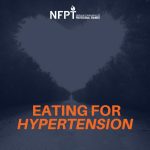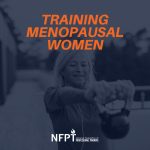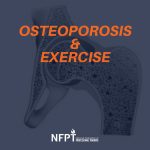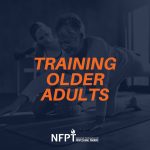
An educated and informed personal trainer can be of tremendous help to post-stroke clients. Gym facilities are famous for their extensive array of mirrors on the fitness floors. By taking advantage of this, a trainer can carefully guide a client through the observation process utilizing mirror exercises described below. We all routinely demonstrate a new exercise to a client before he attempts it; this is much the same principle. A simple mirror can be the solution to a complex rehabilitation problem.
Strokes are currently the leading cause of neurological disability worldwide. Post-stroke life is often characterized by both cognitive and motor impairments as well as balance difficulties. Such challenges lead to functional dependence and a reduced quality of life.
As stroke-related disability is expected to increase in the coming years, it seems crucial to find effective means of neuro-rehabilitation. There is mounting evidence that mirror therapy could play an important role in this endeavor. This also opens yet another avenue of specialization for personal trainers.
How Mirror Exercise Therapy Works
The effect of mirror therapy on brain activity has been investigated in several studies. The principle of mirror therapy (MT) is the use of a mirror to create the reflective illusion of a limb that has been severely affected by a stroke. The goal of such an exercise is to “trick the brain” into thinking movement has occurred in the absence of pain.
This involves placing the affected limb behind a mirror, which is positioned such that the reflection of the opposing (healthy) limb appears in place of the hidden limb. The force behind the resulting adaptations is the activation of the frontal or parietal lobe in the corresponding motor region of the brain. The key players in this process are known as the mirror neurons.
Mirror neurons comprise approximately 20% of all the neurons present in a human brain, and are responsible for one’s ability to differentiate between the left and right sides of the body. Mirror neurons fire not only when a movement is performed, but also when someone else executes that movement and the patient is observing the performance.
A 1995 research study demonstrated the first evidence for the existence of a mirror system in humans by showing that the observation of a movement resulted in motor facilitation. It would appear that action observation triggers action simulation, which in turn facilitates action execution.
Harness The Power of Mental Imagery
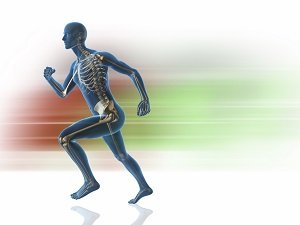
Historically, scientists have operated under the postulate that we gain new skills through practice or direct experience. Today, the understanding of the complex mirror neurons means one can also gain skills through observation and indirect experience.
Consider a time when you were observing a demonstration, perhaps at a fitness conference or workshop. When the presenter demonstrates the correct body mechanics and execution for you to imitate, it is the mirror neurons that are activated, enabling you to learn by creating the mental image of the proper form.
A Clear Picture Is Emerging
Several underlying mechanisms have been suggested for the effect of mirror therapy on motor recovery after stroke. It has been proposed that mirror therapy is related to motor imagery; the mirror confers visual feedback of successfully executing an imagined action with the affected limb. Motor imagery itself, the mental performance of a movement without actual execution, has proven to be highly beneficial in the post-stroke rehab process.
The Mirror as a Stabilizer
Since the ability to balance successfully is the basis for independent movement and most functional performance, damage in this area after a stroke decreases an individual’s stability. Not only does this make the simple act of standing quite challenging; loss of balance leads to difficulty in walking and performing activities of daily living. Scientists have reported improvement of balance ability in stroke patients who performed exercise training in front of a full-length mirror.
Results have led to the prevailing notion that instant self-analysis and correction for stroke patients are in fact achievable, as they receive visual confirmation of their physical alignment through mirrors. Seat a client on a stability ball and have him carefully observe where you place his feet for optimal stability.
The first goal is to acquaint the client with the kinesthetic awareness of his surroundings. The next goal is creating comfort in his stabilization. Eventually, the trainer can progress to the “hidden limb” process, knowing that the client has already established a base of “security” in his ability to begin controlling his balance and his place in the surroundings.
Although mirror neurons were originally thought to only involve hand movements such as grasping, it has recently been demonstrated that the firing also occurs during the execution of movements involving other parts of the body. Since stroke survivors very often exhibit gait issues, more research is currently underway to explore the lower limbs as well.
The mind is a very powerful tool. If we can harness mirror neurons and enable a client to believe in his abilities post-stroke, we are doing more than rehabilitation. We are restoring confidence.
REFERENCES
1.ir.lib.uwo.ca/cgi/viewcontent.cgi?article=4252&context=etd
2. www.researchgate.net/publication/255655143_Mirror_therapy_in_the_motor_recovery_of_upper_extremity
3.tbirehabilitation.wordpress.com/tag/mirror-therapy/
4.www.physio-pedia.com/Mirror_Therapy
5.www.ncbi.nlm.nih.gov/pmc/articles/PMC4357600/
6.academic.oup.com/qjmed/article/106/1/11/1532273/Stroke-rehabilitation-recent-advances-and-future
7.www.touchneurology.com/articles/neuroimaging-advances-stroke-rehabilitation
8.www.researchgate.net/publication/231225721_Stroke_rehabilitation_Recent_advances_and_future_therapies
9.www.ncbi.nlm.nih.gov/pmc/articles/PMC2797860/
10.hbr.org/2007/11/cognitive-fitness
11. www.sciencedirect.com/science/article/pii/S1013702515000809



